It has been over 18 months since Huawei showed off their P50 lineup, with the Huawei P50 and P50 Pro debuting in China back in July 2021. Today though the fallen giant in the smartphone scene has now finally launched its successor, the Huawei P60 and P60 Pro.
Right off the bat, you’ll notice that Huawei has switched away from the dual circular camera bumps that was on the P50 series and their P50 Pocket flip phone, with the Chinese company now using a new ‘Aurora Eye’ camera bump. It’s a more traditional rectangular camera bump with the main camera just ever so slightly going over the sides. This new camera setup houses its new XMAGE camera system, with Huawei touting the P60 series to be able to bring mobile photography to a new level.
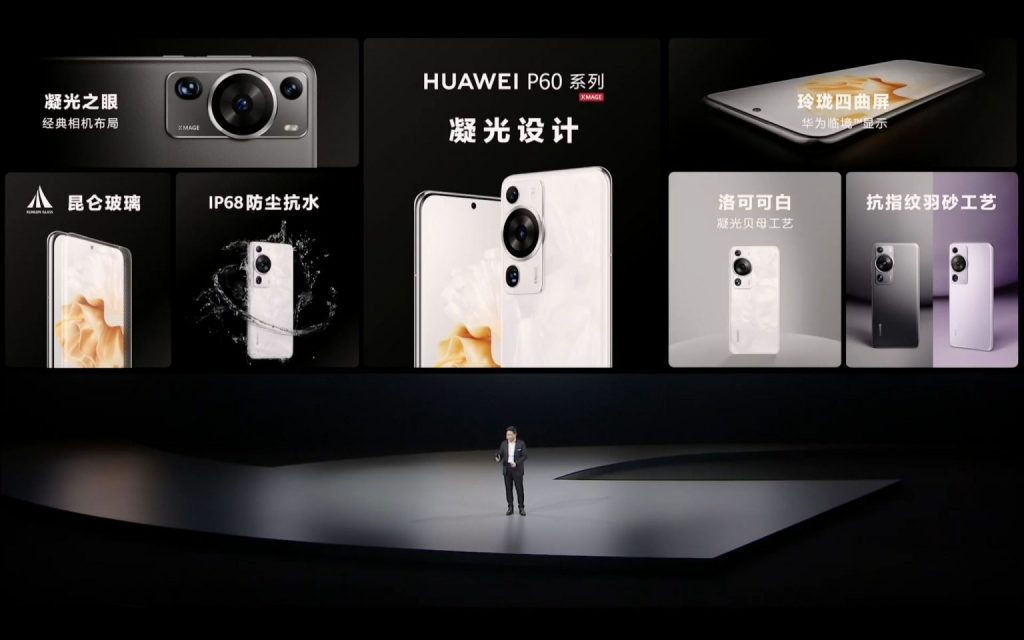
The star of the show is its 48MP main camera with a f/1.4 to f/4.0 ten-step physical variable aperture, similar to the 50MP main camera on last year’s Huawei Mate 50 Pro. This main camera also features optical image stabilisation along with RYYB sensors on all three of the rear cameras. The P60 Pro in particular has a 48MP, f/2.1 periscope telephoto lens with OIS too, offering a 3.5x optical zoom that Huawei claims will be able to output some of the best low light telephoto shots, while a third 13MP, f/2.2 ultrawide camera rounds up the rear camera setup on the P60 Pro.
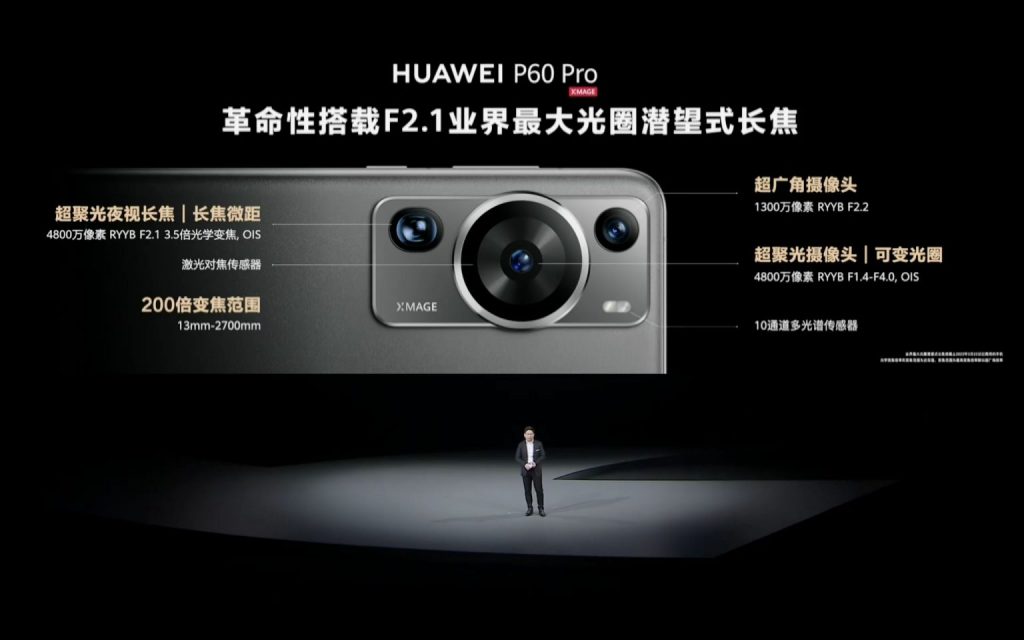
Meanwhile, the Huawei P60 retains the main camera and the triple RYYB sensors but only has a 12MP, f/3/4 periscope telephoto lens for a 5x optical zoom. It too gets the 13MP, f/2.2 ultrawide camera though, with both devices packing a 13MP, f/2.4 front-facing camera for all your selfie needs.
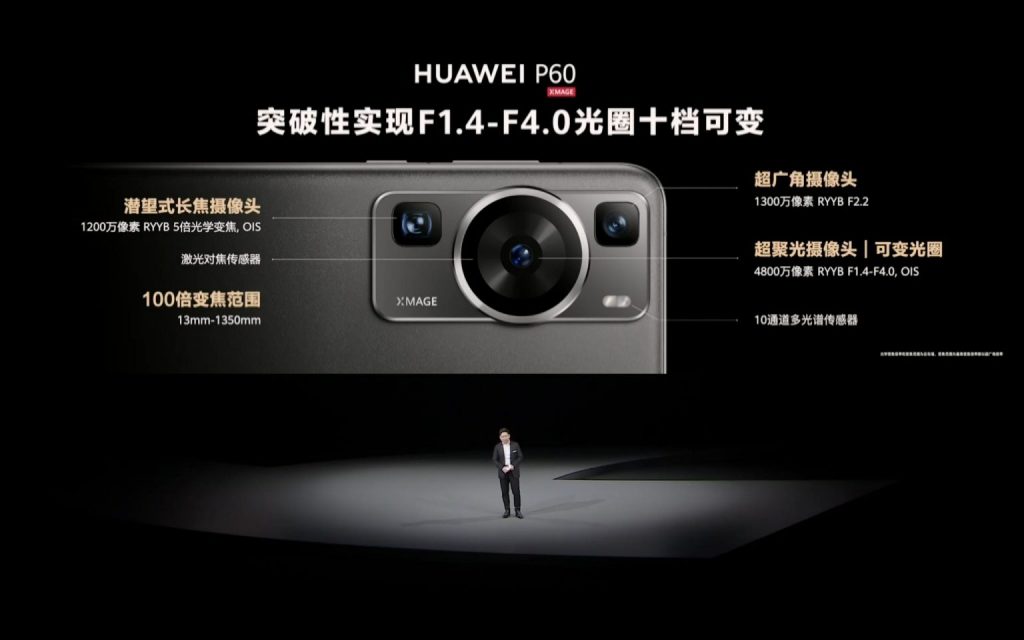
As for the display, both the Huawei P60 and the Huawei P60 Pro feature a large 6.67-inch OLED display with LTPO technology for a variable 1-120Hz refresh rate. The quad-curved screen pushes out a 1220 x 2700p resolution, and covers the DCI-P3 colour gamut with TUV Rheinland Colour Accuracy certification. Huawei’s own Kunlun Glass makes a return here too, covering the display and providing some scratch resistance.
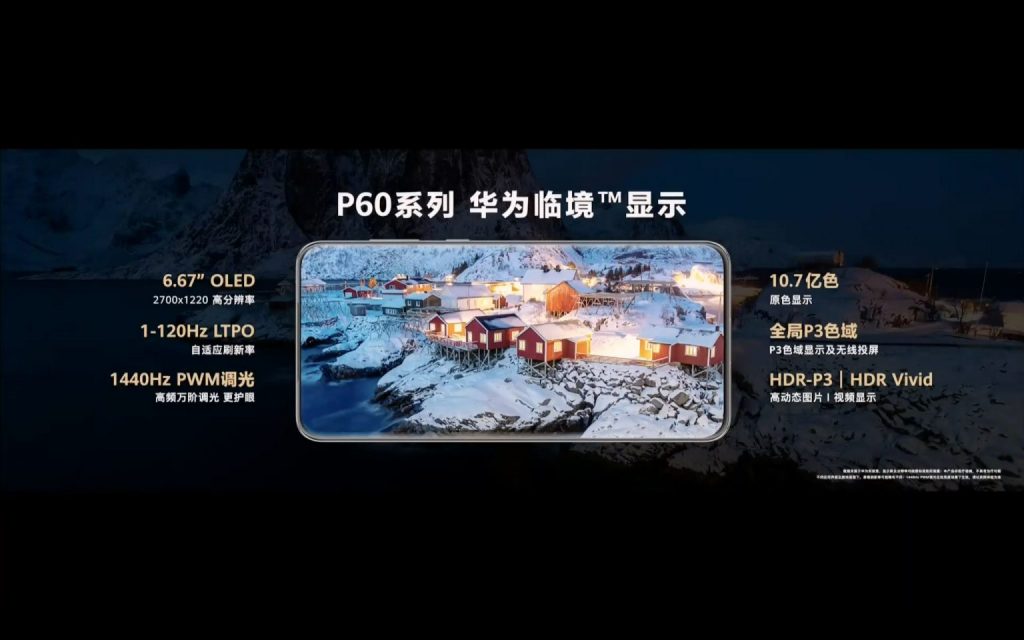
Under the hood, the Huawei P60 series has a Qualcomm Snapdragon 8+ Gen 1 processor that’s limited to just 4G connectivity. Curiously, despite both supposedly having the same chip, Huawei’s spec page for the two phones seems to state that the prime core of the Snapdragon 8+ Gen 1 on the P60 is running at 3.0GHz, while the P60 Pro’s Snapdragon 8+ Gen 1 has the stock 3.2GHz prime core. Also, both phones did not have the amount of RAM listed, but will come with up to 512GB of storage. Of course, they’ll run Harmony OS 3.1 out of the box too, with no support for Google Mobile Services.
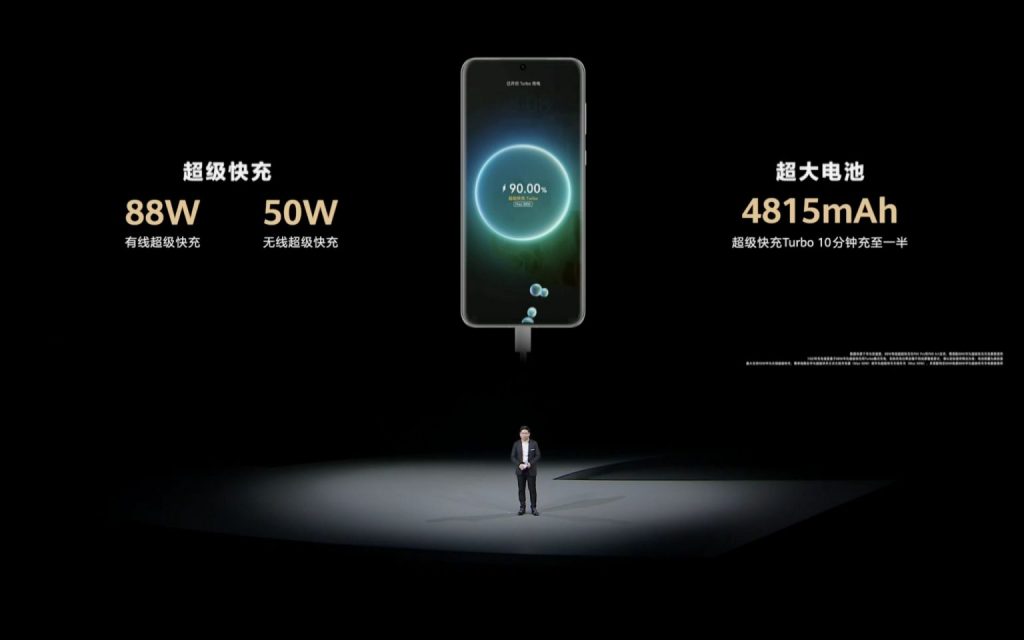
Elsewhere, there’s an identical 4,815mAh battery on both the Huawei P60 and the P60 Pro, though the latter has a faster 88W wired charging speed compared to the P60’s 66W wired charging, though 50W wireless charging is standard across the board. The two phones also have an IP68 dust and water resistance rating, stereo speakers, an in-display fingerprint sensor along with support for WiFi 6, Bluetooth 5.2 and NFC. Also shown off was a satellite communications feature that uses the Chinese BeiDou satellite system, allowing you to send and receive texts when cellular connection isn’t available, such as in emergency situations.
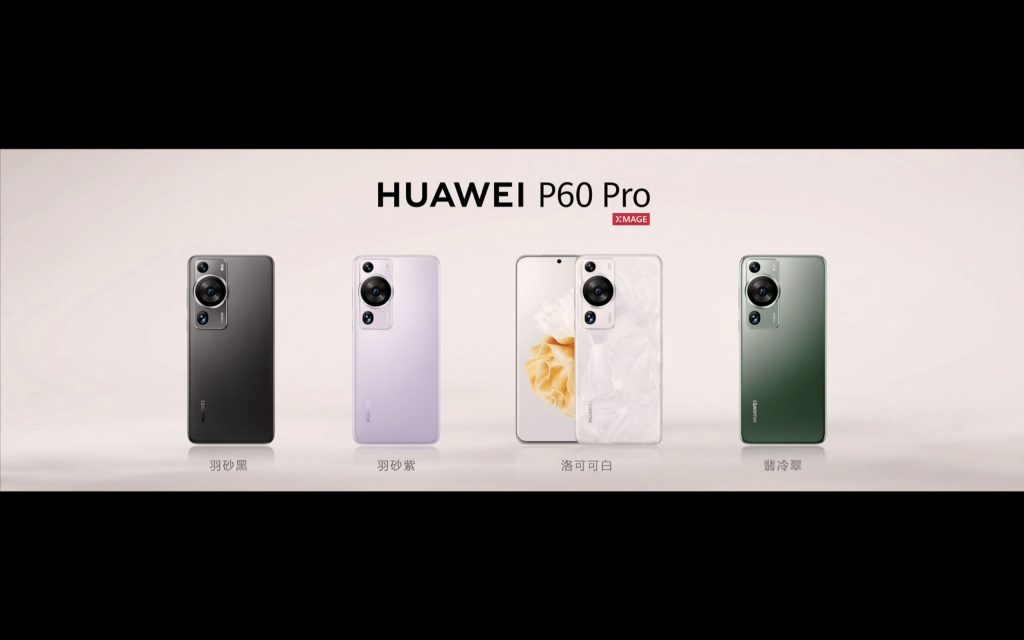

In China, the Huawei P60 will start at just CNY4,488 (~RM2,906.55), while the more premium Huawei P60 Pro will start at CNY6,988 (~RM4,525.61). If you’re keen on snagging one for yourself, it seems as though there’s a good chance the P60 series will be coming to Malaysia, though there’s no word just yet on when this’ll happen nor how much they’ll cost.
0 comments :
Post a Comment